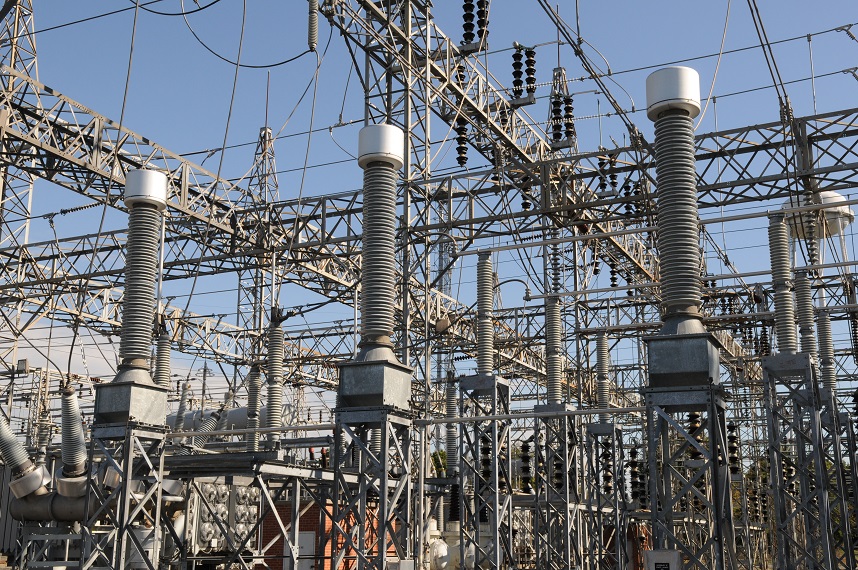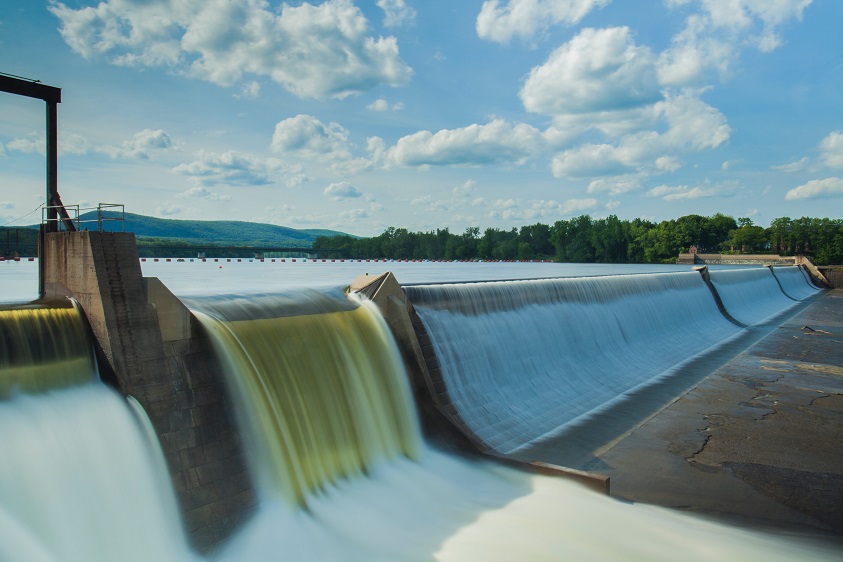Sizing Up Power Procurement Patterns
A deep dive into the sourcing trends that shape property-level electricity prices.
No less than strategies for energy operations, most major sources of electricity are going through a transformation. This evolution ultimately has a ripple effect on pricing at individual properties as well as implications for the national grid. Stability largely characterizes the nation’s electricity supply; nevertheless, a deep dive indicates unmistakable, if gradual, shifts that shape procurement strategies at the portfolio level.

Harrisburg substation. Photo courtesy of Duke Energy
Natural gas prices have stayed low, yet the U.S. Energy Information Administration expects that natural gas production won’t grow as much in 2020 because of a lag between changes in price and changes in drilling activity. The report predicted that low third-quarter 2019 prices will reduce drilling in the first six months of 2020.
But natural gas will still provide more than a third of total utility-scale electricity generation in 2020, going from 34 percent in 2018 to 37 percent in 2019 to an anticipated 39 percent in 2020.
Electricity generated from coal continues to decrease, slipping from 25 percent in 2019 to 22 percent in 2020, both down from 28 percent in 2018. EIA’s nuclear share of generation and hydropower generation has remained stable from 2018 through 2020, at about 20 percent for nuclear and 7 percent for hydropower. The EIA expects wind, solar and other non-hydropower renewable to go from 9 percent of the total utility-scale generation in 2018 to 10 percent in 2019 and 12 percent in 2020.
Renewables Rising

Image courtesy of American Public Power Association via Unsplash
While energy generation from coal continues to decline, the U.S. electric generation from renewables other than hydropower, mainly wind and solar, is expected to grow about 14 percent to 466 billion kilowatt-hours from 2019 to 2020, according to the EIA forecast. Texas accounts for 19 percent of non-hydropower renewables generation in 2019 and is expected to reach 22 percent in 2020.
California’s share of non-hydropower renewables generation is projected to fall slightly from 15 percent in 2019 to 14 percent in 2020 while the Midwest and Central power regions are expected to see shares in the 16 percent to 18 percent range for 2019 and 2020, according to EIA.
Lazard’s annual Levelized Cost of Storage Analysis shows that storage costs, particularly for lithium-ion battery technology, is declining faster than for alternate store technologies. It remains the least expensive energy storage technology analyzed and is expected to see continued cost declines due to improving efficiencies and maturing supply chain. The report notes solar-plus- storage systems are economically attractive for short-duration wholesale and commercial uses, though they still face challenges when used for residential or longer-duration wholesale scenarios.
Deloitte’s 2020 Renewable Energy Industry Outlook reports that lithium-ion battery storage prices fell 35 percent in the first half of 2019. Authored by Marlene Motyka, the firm’s renewable energy leader the report states the steady decline of prices for battery storage are beginning to make “intermittent wind and solar increasingly competitive with traditional, ‘dispatchable’ energy sources.”
While those numbers are promising, there needs to be continued price declines on batteries for energy storage when paired with renewables, said Scott Smith, vice chairman & U.S. power and utilities leader at Deloitte LP . “Storage is part of the answer but there is not enough widespread adoption even though we are seeing pricing coming down on batteries,” he remarked.
Still, Deloitte expects further growth in the renewable energy sector in 2020. The firm’s study notes that commercial customers used 5 percent more renewable energy in the first half of 2019 compared to the same period of 2018. The report also points out that once again in 2019, U.S. corporate renewable contracts hit new levels with corporations signing power purchase agreements (PPAs) for 5.9 gigawatts (GW) of renewable energy through June 2019.
Going Long

Image courtesy of American Public Power Association via Unsplash
Andrew Barth, an energy broker and partner at CSD Energy Advisors in Houston, points out that each market functions independently of another, particularly in the deregulated states. But one general trend has been the continued adoption by commercial users of renewable energy that is coming from both in front of the meter and behind-the-meter sources. He observed many corporations committed to using a certain percentage of green power to meet their renewable energy goals are choosing to buy carbon offsets and starting to negotiate for them now.
Barth, whose company procures energy from third-party retail suppliers for commercial clients in deregulated states, said those commercial users are entering into longer-term agreements with higher prices on the near term and much cheaper on the outer years. While most contracts used to run for five years at the longest, he said they are now locking in procurement agreements for seven to nine years, even as long as 12 and 13 years. Those long-term contracts used to be mainly reserved for government institutions or school districts, Barth said, but they are “starting to come downstream” for “any customer concerned about their bottom line.”
He said the prices are often cheaper in the later years because “there is the belief that technology is going to continue to improve and we will have another one to five years of renewables coming online that should help stabilize” the prices. Prices for the early years of the contracts, Barth said, are more expensive because there is more risk and providing power to serve the peak load has gotten very expensive as more traditional generation providers are shuttering without enough renewables online yet to make up the difference.
Both Barth and Smith note that commercial users are increasingly more active in energy management of their properties and portfolios, which can also provide cost savings. As utilities have been upgrading and digitizing their IT and ERP (enterprise resource planning) systems to better interact with customers, Smith said Deloitte’s commercial real estate clients have been seeking real-time information about their properties’ energy management systems, including different ways to use big data.







You must be logged in to post a comment.